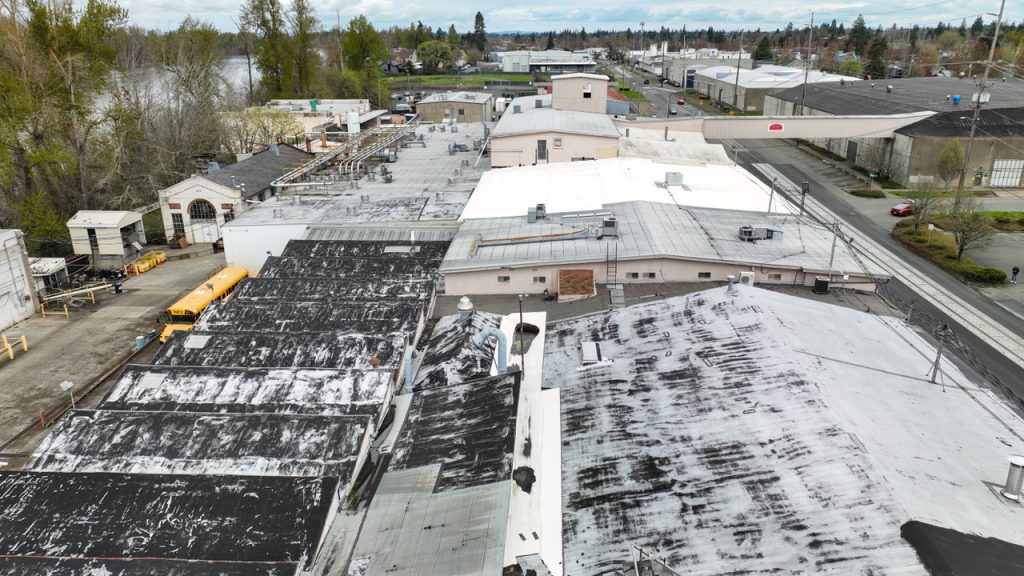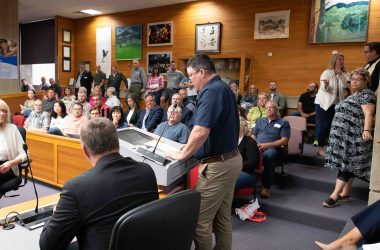Efforts to transform a decaying industrial area of north Salem into a humming center of urban life is getting a multimillion dollar boost from the federal government.
The city of Salem will receive a $2.7 million federal grant for safety and traffic improvements along an eight-block stretch of Northeast Front Street just north of downtown, federal legislators announced this week.
The planning will take about three years, said city spokesman Trevor Smith.
City leaders said the transportation planning is key to broader ambitions to revitalize the Front Street corridor into a neighborhood.
Plans are underway to redevelop the shuttered Truitt Bros. cannery on Front Street into a riverfront complex, called The Cannery, that would anchor the neighborhood with 382 apartments, a food hall, a brewery and other businesses.
City planners are working on creating a new urban renewal area that would help boost the Cannery and spur other development. The area hosts warehouses and has large vacant properties.
“There’s a lot of redevelopment potential,” said Kristin Retherford, Salem’s community planning and development director, in a May interview with Salem Reporter. She said Friday that the transportation grant sets the stage for successful development by aiding in early planning.
Transportation improvements
The federal money comes from the 2022 bipartisan infrastructure bill, and in Salem is intended to address unsafe road conditions and a lack of walkability in the Front Street area.
The project covers a 3,700-foot section of road, running from Northeast South Street to the Northeast Front Street Bypass, an area city staff described in a summary as having “serious safety issues.”A railroad track runs down the middle of Front Street across the targeted area, with no barriers separating trains from vehicle traffic.
“Planning efforts will seek to address safety risks for all road users due to high speeds, numerous unsignalized intersections, and at-grade rail crossings. The corridor features seven unsignalized intersections in less than one mile,” the U.S. Department of Transportation fact sheet on the project said.

U.S. Rep. Andrea Salinas, D-Oregon, called the money for Salem “vital to improving public safety and growing our economy for the future.” Redevelopment plans also hinge on making the street more accessible to bikes, pedestrians and mass transit, the city said. As an industrial area with few sidewalks and no bike lanes, Front Street isn’t suited to the development the city hopes to encourage in the area.
“The city’s adopted plans for this area focus on reimagining the land use pattern in the corridor to take advantage of Willamette River location. This could result in a very attractive urban community characterized by low vehicle dependence and high use of pedestrian, bicycle, and transit modes,” the city plan says.
The plan outlines in broad strokes issues Salem hopes to address through a plan, though it doesn’t commit to a particular course of action.
Money will pay for environmental and hazardous materials analysis, studies of archaeological resources in the area, roadway design, analysis of the Mill Street Bridge and traffic engineers to look at current and future traffic volumes, among other items.
The narrow Mill Street Bridge could be replaced or improved to better allow for pedestrian and bike traffic over it. Some railroad crossings along the road could be closed, and plans would be made to separate trains from other traffic.
Because the project is in a high poverty area, the city doesn’t have to contribute any matching money.
Grant funds would pay for public engagement, data collection and analysis of transportation plans. A report recommending improvement projects would go to the Salem City Council for adoption.
The city would still need to spend money to construct the improvements.
Cannery plans
The transportation planning isn’t a direct part of the Cannery redevelopment, but city officials and those working on the project said it would benefit the effort.
“It’s a demonstration that the city of Salem is excited about opening up the remainder of Front Street and taking on that project under their arms,” said Trent Michels, the developer of The Cannery. “We’re really excited to see them lean into their community and lead with the improvements of Front Street.
Michels announced plans for the cannery site last April. He is under contract to buy the property from the Truitt family and is awaiting a city determination on the land use plan for the site.
Rogue Brewing has signed a letter of intent to occupy the brewery space on site.
Michaels said he expects the sale to close in early 2025 and would like to begin demolition soon after. Construction is likely to take several years.
Prior to the sale, the conveyor bridge spanning Front Street near Northeast Market Street will be demolished, said Jordan Truitt, a commercial real estate broker who’s representing the sellers. Truitt’s relatives own the site, but he has no personal ownership of the property.
The bridge demolition awaits permits from the railroad company. Truitt said he hopes to have that completed by early fall.
Contact reporter Rachel Alexander: [email protected] or 503-575-1241.
A MOMENT MORE, PLEASE– If you found this story useful, consider subscribing to Salem Reporter if you don’t already. Work such as this, done by local professionals, depends on community support from subscribers. Please take a moment and sign up now – easy and secure: SUBSCRIBE.

Rachel Alexander is Salem Reporter’s managing editor. She joined Salem Reporter when it was founded in 2018 and covers city news, education, nonprofits and a little bit of everything else. She’s been a journalist in Oregon and Washington for a decade. Outside of work, she’s a skater and board member with Salem’s Cherry City Roller Derby and can often be found with her nose buried in a book.









